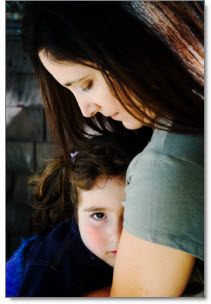In fact, studies indicate that as many as 90 percent of all children with bipolar disorder also have ADHD, and that roughly 50 percent also have comorbid CD. Further complicating diagnosis, the presentation of childhood mania differs dramatically from that in adults. For example, in children and adolescents, the manic phase of the disorder tends toward extreme irritability and destructive outbursts, while in adults the manic phase is more commonly expressed as grandiosity or euphoria. Also, the duration of these episodes in children is often too brief to satisfy diagnostic criteria.
The most widely used mood stabilizers for treating children and adolescents diagnosed with bipolar disorder are lithium and Depakote. Although studies confirm that these medications are effective, their safety is questionable, due to the life-long nature of bipolar disorder. Long-term lithium use has been linked to quite a few side effects, ranging from acne and cloudy thinking to weight gain, tremors, decreased thyroid function, and kidney problems. As a result, children taking lithium should have their blood levels monitored several times a year. Similarly, long-term use of Depakote can cause liver problems and toxicity. In fact, Depakote’s potential health risks have led the FDA to order that a “black box” warning be placed on the medication for both pancreatitis and liver failure. For this reason, any child taking Depakote should have their blood tested every three to six months.
Second generation antipsychotics appear to be effective at managing the severe mood swings associated with bipolar disorder in children and teens. But again, benefit-vs.-risk is a considerable concern. These drugs can induce weight gain, sleepiness, parkinsonian and extrapyramidal symptoms, elevated lipid levels, and an increased risk of developing Type II diabetes. As a result, only two of these antipsychotics – Risperdal and Abilify – have been FDA-approved for use in children. Three others – Seroquel, Geodon and Zyprexa – are now under the FDA’s consideration for use with children.
Looking ahead, the safety/effectiveness conundrum associated with mood stabilizers and newer antipsychotics in the treatment of pediatric bipolar disorder will most likely linger until a new, safer generation of compounds is developed. When it comes to treating children, the balance needs to favor minimizing risks. However, for children with serious and potentially dangerous behavioral problems associated with bipolar disorder, the benefits of medication use typically far outweigh these risks.
————————————————————
Joe Wegmann is a licensed clinical social worker and a clinical pharmacist with over 30 years of experience in counseling and medication treatment of depression and anxiety. Joe’s new book, Psychopharmacology: Straight Talk on Mental Health Medications is available at www.pesi.com. To learn more about Joe’s programs or to contribute a question for Joe to answer in a future article, visit his website at www.thepharmatherapist.com, or e-mail him at joe@thepharmatherapist.com.
